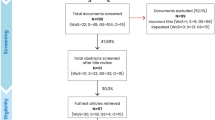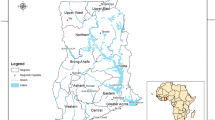Abstract
Based on extensive doctoral fieldwork, this article explored the impacts of Cyclone Aila on a coastal community in Bangladesh and subsequently proposed some community-led interventions towards sustainable disaster recovery. There has been a very limited academic investigation on the subject, and the findings of this study may generate useful lessons and tips for both academics and practitioners especially in the field of disaster recovery. The study employed a mixed method research design, where quantitative data were collected through a face-to-face structured interview schedule from 230 Aila (disaster) affected coastal household heads who had been the recipients of two government and nongovernmental organizations’ disaster recovery programs. As part of the qualitative investigation, 10 key informants’ interviews were conducted targeting subject matter specialists. Besides, two focus group discussions were arranged with the local disaster management committee. The findings revealed the extent and magnitude of the disaster’s (Aila) impact on community life from a range of socioeconomic and infrastructural perspectives. It was also observed that the recovery process was slow owing to such reasons as the short duration of the project, lack of coordination among the recovery intervention, absence of national recovery planning and framework, weak interfacing among the government extension services at the local level, failure to adapt with livelihood transformation, absence of sustainable solution on the problem, e.g., safe drinking water, housing, and employment generation, and limited participation opportunity in the recovery program. Most of the cyclone-affected people failed to recover from their losses and damages even after the last 10 years. In this context, this study argues in favor of formulating a new or revamped sustainable disaster recovery policy and associated community-led programmatic interventions underpinned by such elements as local resource mobilization, community participation, community planning, community partnership, local leadership development, and community empowerment.



Similar content being viewed by others
References
Adger, W. N. (2006). Vulnerability. Global environmental change, 16(3), 268–281.
Ahmed, B., Kelman, I., Fehr, H. K., & Saha, M. (2016). Community resilience to cyclone disasters in coastal Bangladesh. Sustainability, 8(8), 805.
Chandrasekhar, D. (2012). Digging deeper: participation and non-participation in post-disaster community recovery. Community Development, 43(5), 614–629. https://doi.org/10.1080/15575330.2012.730538.
Chang, S. E., & Miles, S. B. (2004). The dynamics of recovery: A framework. In Modeling spatial and economic impacts of disasters (pp. 181-204). Springer, Berlin, Heidelberg. https://doi.org/10.1007/978-3-540-24787-6_10
Clinton, W. J. (2006). Lessons Learned from Tsunami Recovery: Key Propositions for Building Back Better. United Nations, New York: United Nations Secretary-General’s Special Envoy for Tsunami Recovery.
Cutter, S. L. (2003). GI Science, Disasters, and Emergency Management. Transactions in GIS, 7(4), 439–446.
Cutter, S. L. (1996). Vulnerability to environmental hazards. Progress in human geography, 20(4), 529–539.
Cutter, S. L., Barnes, L., Berry, M., Burton, C., Evans, E., Tate, E., & Webb, J. (2008). A place-based model for understanding community resilience to natural disasters. Global environmental change, 18(4), 598–606.
Dominelli, L. (2012). Green social work: From environmental crises to environmental justice. Polity.
Dominelli, L. (2015). The opportunities and challenges of social work interventions in disaster situations. International Social Work, 58(5), 659–672.
Drolet, J., Dominelli, L., Alston, M., Ersing, R., Mathbor, G., & Wu, H. (2015). Women rebuilding lives post-disaster: innovative community practices for building resilience and promoting sustainable development. Gender & Development, 23(3), 433–448.
Edgington, D. W. (2017). ‘Building back better’along the Sanriku coast of Tohoku, Japan: five years after the ‘3/11’disaster. Town Planning Review, 88(6), 615–638. https://doi.org/10.3828/tpr.2017.38.
Fan, L. (2013). Disaster as opportunity. Building back better in Aceh, Myanmar and Haiti.
Fernandez, G., & Ahmed, I. (2019). “Build back better” approach to disaster recovery: research trends since 2006. Progress in Disaster Science, 1, 100003. https://doi.org/10.1016/j.pdisas.2019.100003.
Fulton, A. E., & Drolet, J. (2018). Responding to disaster-related loss and grief: recovering from the 2013 flood in southern Alberta, Canada. Journal of Loss and Trauma, 23(2), 140–158.
Gardoni, P., & Murphy, C. (2008). Recovery from natural and man-made disasters as capabilities restoration and enhancement. International Journal of Sustainable Development and Planning, 3(4), 317–333. https://doi.org/10.2495/SDP-V3-N4-317-333.
Gardoni, P., & Murphy, C. (2010). Gauging the societal impacts of natural disasters using a capability approach. Disasters, 34(3), 619–636. https://doi.org/10.1111/j.1467-7717.2010.01160.x.
He, L. (2019). Identifying local needs for post-disaster recovery in Nepal. World Development, 118, 52–62. https://doi.org/10.1016/j.worlddev.2019.02.005.
Henderson, R. (2013). Social work amidst climate change and disaster risk reduction. Social Dialogue, 6, 26–35.
IDMC (2017). Global Disaster Displacement Risk-A baseline for future work. Internal Displacement Monitoring Centre (IDMC), Geneva, Switzerland.
Inter-Agency Standing Committee (IASC). (2007). IASC guidelines on mental health and psychosocial support in emergency settings. Geneva: Switzerland.
Islam, M. R., & Hasan, M. (2016). Climate-induced human displacement: a case study of Cyclone Aila in the south-west coastal region of Bangladesh. Natural hazards, 81(2), 1051–1071. https://doi.org/10.1007/s11069-015-2119-6.
Islam, M. R., & Khan, N. A. (2018). Threats, vulnerability, resilience and displacement among the climate change and natural disaster-affected people in South-East Asia: an overview. Journal of the Asia Pacific Economy, 23(2), 297–323.
Islam, M. R., & Shamsuddoha, M. (2017). Socioeconomic consequences of climate induced human displacement and migration in Bangladesh. International Sociology, 32(3), 277–298. https://doi.org/10.1177/0268580917693173.
Islam, R., & Walkerden, G. (2015). How do links between households and NGOs promote disaster resilience and recovery?: a case study of linking social networks on the Bangladeshi coast. Natural Hazards., 78(3), 1707–1727. https://doi.org/10.1007/s11069-015-1797-4.
Islam, R., Walkerden, G., & Amati, M. (2017). Households’ experience of local government during recovery from cyclones in coastal Bangladesh: resilience, equity, and corruption. Natural Hazards, 85(1), 361–378.
Islam, M. Z., Kolade, O., & Kibreab, G. (2018). Post-disaster housing reconstruction: the impact of resourcing in post-cyclones Sidr and Aila in Bangladesh. Journal of International Development, 30(6), 934–960.
Jordan, E. (2012). Pathways to community recovery: a qualitative comparative analysis of post-disaster outcomes (Doctoral dissertation, University of Colorado at Boulder).
Kelly, P. M., & Adger, W. N. (2000). Theory and practice in assessing vulnerability to climate change andFacilitating adaptation. Climatic change, 47(4), 325–352.
Khasalamwa, S. (2009). Is ‘build back better’a response to vulnerability? Analysis of the post-tsunami humanitarian interventions in Sri Lanka. Norsk Geografisk Tidsskrift-Norwegian Journal of Geography, 63(1), 73–88.
Krejcie, R. V., & Morgan, D. W. (1970). Determining sample size for research activities. Educational and Psychological Measurement, 30(3), 607–610. https://doi.org/10.1177/001316447003000308.
Mallick, B., & Vogt, J. (2014). Population displacement after cyclone and its consequences: empirical evidence from coastal Bangladesh. Natural hazards, 73(2), 191–212.
Mallick, B., Rahaman, K. R., & Vogt, J. (2011a). Coastal livelihood and physical infrastructure in Bangladesh after cyclone Aila, 629–648. https://doi.org/10.1007/s11027-011-9285-y
Mallick, B., Khan, R. R., & Joachim, V. (2011b). Social vulnerability analysis for sustainable disaster mitigation planning in coastal Bangladesh. Disaster Prevention and Management: An International Journal, 20(3), 220–237. https://doi.org/10.1108/09653561111141682.
Mallick, B., Ahmed, B., & Vogt, J. (2017). Living with the risks of cyclone disasters in the south-western coastal region of Bangladesh. Environments, 4(1), 13.
Maly, E. (2018). Building back better with people centered housing recovery. International Journal of Disaster Risk Reduction, 29, 84–93. https://doi.org/10.1016/j.ijdrr.2017.09.005.
Mannakkara, S., & Wilkinson, S. (2013). Build back better principles for post-disaster structural improvements. Structural Survey, 31(4), 314–327.
Mannakkara, S., & Wilkinson, S. (2015). Supporting post-disaster social recovery to build back better. International Journal of Disaster Resilience in the Built Environment, 6(2), 126–139. https://doi.org/10.1108/IJDRBE-06-2013-0019.
Marshall, M. I., & Schrank, H. L. (2014). Small business disaster recovery: a research framework. Natural Hazards, 72(2), 597–616.
Masud-All-Kamal, M. (2013). Livelihood coping and recovery from disaster: the case of coastal Bangladesh. Curr Res J Soc Sci, 5(1), 35–44.
Mathbor, G. M. (1999). The perception of effective community participation: coastal development projects in Bangladesh (a grounded theory study).
Mathbor, G. M. (2007). Enhancement of community preparedness for natural disasters: the role of social work in building social capital for sustainable disaster relief and management. International Social Work, 50(3), 357–369.
Nakagawa, Y., & Shaw, R. (2004). Social capital: A missing link to disaster recovery. International Journal of Mass Emergencies and Disasters, 22(1), 5–34.
OECD. (2008). Handbook on constructing composite indicators: methodology and user guide. Joint Research Centre-European Commission.
Olshansky, R. B., Hopkins, L. D., & Johnson, L. A. (2012). Disaster and recovery: Processes compressed in time. Natural Hazards Review, 13(3), 173–178.
Pyles, L. (2016). Decolonising disaster social work: environmental justice and community participation. The British Journal of Social Work, 47(3), 630–647. https://doi.org/10.1093/bjsw/bcw028.
Pilkey, O. H., & Dixon, K. L. (1996). The corps and the shore (p. 272). D.C.: Island Press Washington.
Pyles, L., Svistova, J., Ahn, S., & Birkland, T. (2018). Citizen participation in disaster recovery projects and programmes in rural communities: a comparison of the Haiti earthquake and Hurricane Katrina. Disasters, 42(3), 498–518. https://doi.org/10.1111/disa.12260.
Quarantelli, E. L. (1999). The disaster recovery process: What we know and do not know from research (p. 19). Newark, DE: Disaster Research Center, University of Delaware.
Rigaud, K.K., de Sherbinin, A., Jones, B., Bergmann, J., Clement, V., Ober, K., Schewe, J., Adamo, S., McCusker, B., Heuser, S. & Midgley, A. (2018). Groundswell: preparing for internal climate migration. World Bank.
Sadik, S., Nakagawa, H., Rahman, R., & Shaw, R. (2018a). A study on Cyclone Aila recovery in Koyra , Bangladesh: evaluating the inclusiveness of recovery with respect to predisaster vulnerability reduction. International Journal of Disaster Risk Science, 9(1), 28–43. https://doi.org/10.1007/s13753-018-0166-9.
Sadik, M. S., Nakagawa, H., Shaw, R., Rahman, M. R., Kawaike, K., Parvin, G. A., & Talchavhadel, R. (2018b). Measuring progress of recovery from people’s perception: a study on Cyclone Aila recovery in Koyra, Bangladesh. Disaster Prevention Research Institute Annuals. B, 61(B), 637–646.
Saleebey, D. (2006). The strengths perspective: Possibilities and problems. The strengths perspective in social work practice, 279-303.
Smith, G.P. & Wenger, D. (2007). Sustainable disaster recovery: Operationalizing an existing agenda. In Handbook of disaster research (pp. 234-257). Springer, New York.
Song, Y., Li, C., Olshansky, R., Zhang, Y., & Xiao, Y. (2017). Are we planning for sustainable disaster recovery? Evaluating recovery plans after the Wenchuan earthquake. Journal of Environmental Planning and Management, 60(12), 2192–2216. https://doi.org/10.1080/09640568.2017.1282346.
Subhani, R., & Ahmad, M. M. (2019). Socio-economic impacts of Cyclone Aila on migrant and non-migrant households in the southwestern coastal areas of Bangladesh. Geosciences, 9(11), 482.
Tan, N. T. (2009). Disaster management: strengths and community perspectives. Journal of Global Social Work Practice, 2(1), 217–233.
Tan, N. T., & Yuen, F. (2013). Social work, strengths perspective, and disaster management: roles of social workers and models for intervention. 1-7.
UN. (United Nations) (2010). Cyclone Aila: joint UN multi-sector assessment and response framework. June. http://www.lcgbangladesh.org/derweb/Needs%20Assessment/Reports/Aila_UN_AssessmentFramework_final.pdf. Accessed 15th Oct 2019.
UNDP. (2012). Review of development partners’ response to Cyclone Aila. New York: Early Recovery Facility, UNDP.
Wiek, A., Harlow, J., Melnick, R., Van Der Leeuw, S., Fukushi, K., Takeuchi, K., & Kutter, R. (2015). Sustainability science in action: a review of the state of the field through case studies on disaster recovery, bioenergy, and precautionary purchasing. Sustainability Science, 10(1), 17–31.
Willett, J. (2017). Micro disasters: expanding the social work conceptualization of disasters. International Social Work, 62(1), 133–145. https://doi.org/10.1177/0020872817712565.
Zakour, M. J. (2013). Social Work and community disaster vulnerability and resiliency. Social Dialogue, 6, 11–25.
Zakour, M. J., & Harrell, E. B. (2004). Access to disaster services: Social work interventions for vulnerable populations. Journal of Social Service Research, 30(2), 27–54.
Acknowledgments
This study is based on first author’s PhD work funded by the YAYASAN KHAZANAH (YK) SCHOLARSHIP 2017 for studying PhD at the University of Malaya, Malaysia. The authors acknowledge the scholarship authority as well as all participants who participated in the study
Author information
Authors and Affiliations
Corresponding author
Ethics declarations
Ethical Approval
This study received ethical approval from the University of Malaya Research Ethics Committee (UMREC) (Reference no- UM. TNC2/UMREC-460).
Conflict of Interest
The authors declare that they have no conflict of interest.
Informed Consent
All participants signed a written informed consent form, or, if they were illiterate, were read the consent form and provided their fingerprint with a witness signature.
Additional information
Publisher’s Note
Springer Nature remains neutral with regard to jurisdictional claims in published maps and institutional affiliations.
Rights and permissions
About this article
Cite this article
Islam, E., Wahab, H.B.A. The Impact of a Cyclonic Disaster on Coastal Communities in Bangladesh: Possible Community-led Interventions Towards Sustainable Disaster Recovery. Glob Soc Welf 7, 339–352 (2020). https://doi.org/10.1007/s40609-020-00181-5
Published:
Issue Date:
DOI: https://doi.org/10.1007/s40609-020-00181-5




